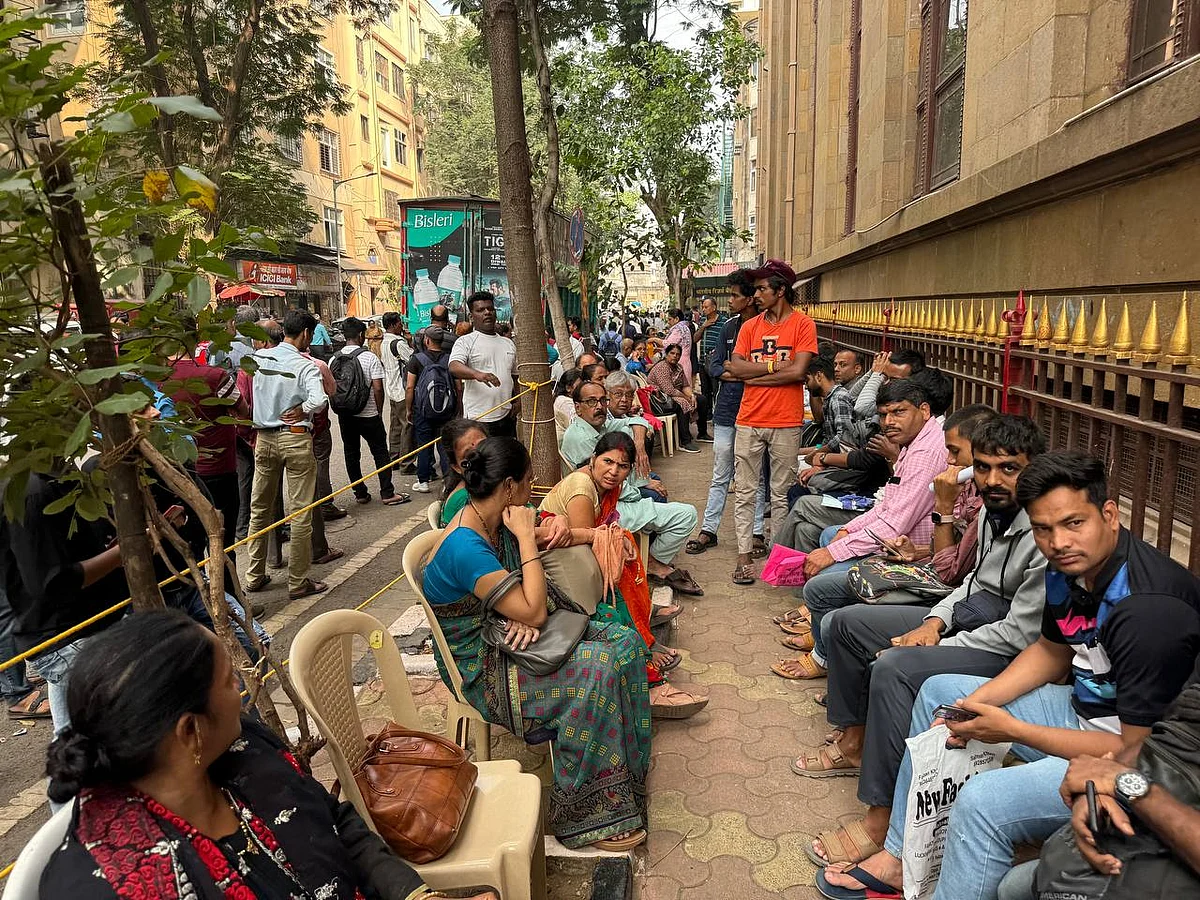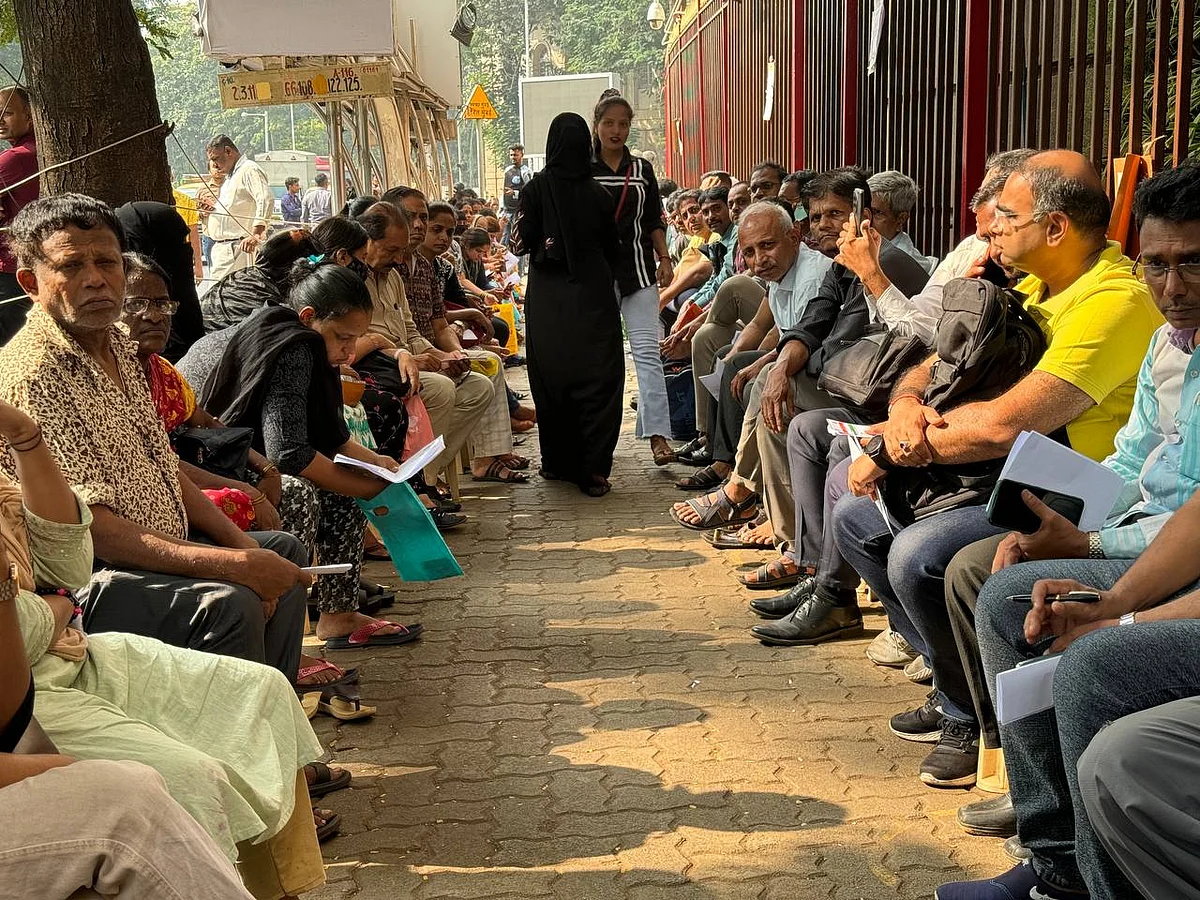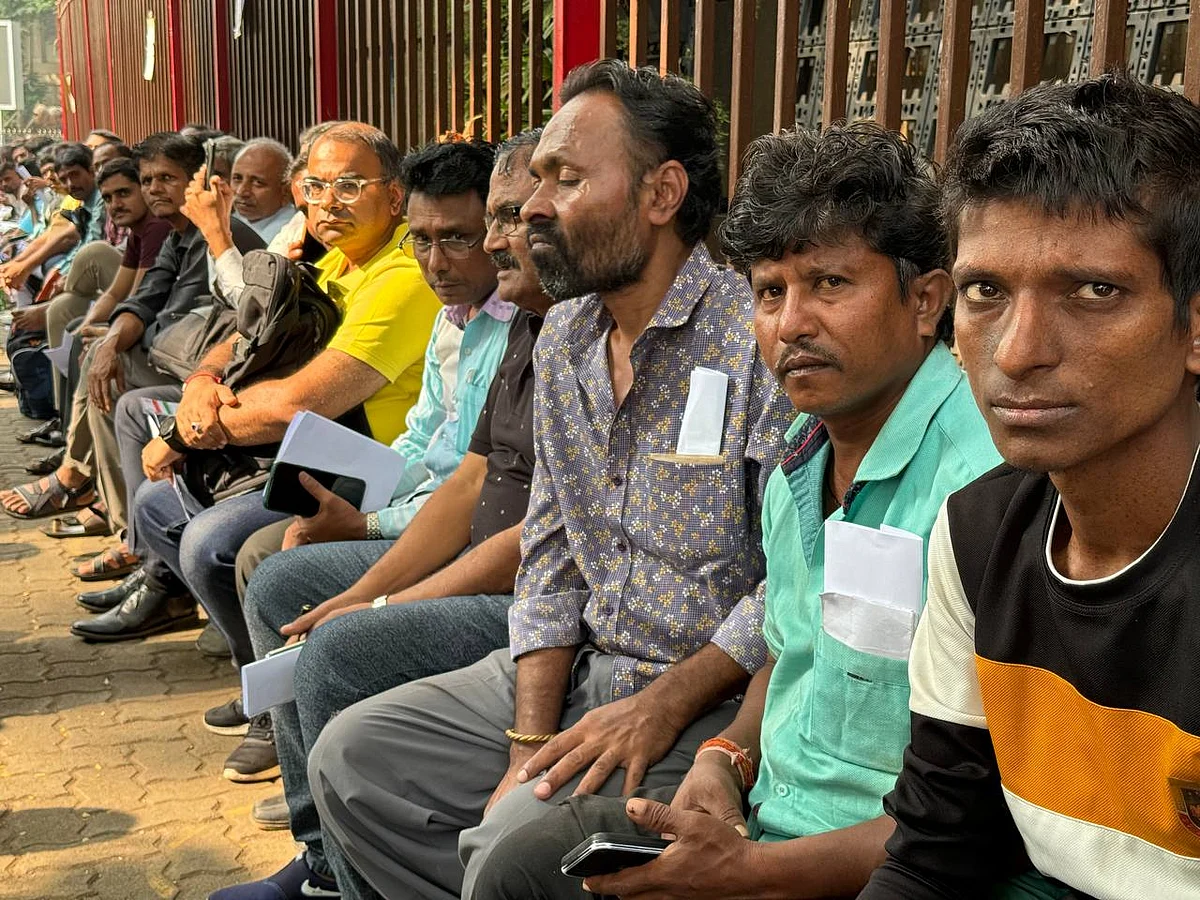Middlemen In Mumbai Turn Rs 2,000 Note Exchange Into A Business
How middlemen are exploiting the Rs 2,000 note exchange process to earn hefty commissions

Pooja, a slum dweller in Mumbai's premier district of Nariman Point, was scouring through the crowd gathered outside the Reserve Bank of India headquarters in Mumbai to exchange their Rs 2,000 notes on Wednesday.
She is one among the many intermediaries in the area, looking to make some money off the people queued to exchange their banknotes from the RBI.
"You tell me how much (money) you want to exchange, I have my girls standing in the queue. I will get it done for you," Pooja told this reporter. "I will charge Rs 500 on one note," she added brazenly.
It has been nearly two months since the banks stopped accepting Rs 2,000 currency notes. But, people have been bee lining outside the RBI's office everyday since Oct. 8, according to at least six people that BQ Prime spoke to.
If one observes the scene keenly, it is evident that the crowd is a mix of honest depositors and the proxies hired by the intermediaries.
On May 19, the RBI announced the withdrawal of Rs 2,000 notes from circulation, and instructed public to deposit or exchange the currency notes by Sept. 30.
The deadline was later extended by a week to Oct. 7. Following the date, people can exchange Rs 2,000 banknotes only at RBI's 19 issue offices across the country. But, there is a limit of Rs 20,000 to be exchanged or deposited at a time. Technically, if one has the time for it, they can stand in line multiple times to exchange or deposit more money.
What is happening outside the RBI office looks like a planned pursuit of middlemen who hire low-income earners, often called "money mules", with a bank account to exchange Rs 2,000 currency notes.
The RBI defines a money mule transaction as an arrangement where an individual with a bank account is recruited to receive funds and transfer to accounts held on behalf of another person, after subtracting a certain commission payment.
The ones outside the RBI now are charging a commission of up to 50% or Rs 1,000 on every Rs 2,000 note.
When the depositor (or the mule) enters the RBI, they are required to furnish a government issued identity card, a signed copy, the banknotes, and fill out a form.
"Earlier, I used to go inside the office to exchange notes everyday using my Aadhaar card and PAN card on alternate days. They have my records now. So, I cannot go. I need new faces," Pooja explained.
Over the course of the day, multiple such intermediaries threw up potential deadlines when the RBI will stop accepting the Rs 2,000 currency notes at their offices. This was done not only to encourage more genuine depositors to use intermediaries, but also to raise the commissions charged to them. The regulator is yet to announce any deadline for accepting these notes.
According to a person with direct knowledge of the matter, the RBI cannot announce any definite deadline, as Rs 2,000 notes continue to remain legal tender. Moreover, controlling money mules remains outside the purview of the banking regulator's powers, this person added.

Lines of customers outside an RBI office at Fort, Mumbai. (Source: BQ Prime)
While the third parties may be innocent in some cases, in others, they "may be having complicity with the criminals", the RBI stated in a 2015 updated circular. Many a times, the address and contact details of such mules are found to be fake or not updated, the RBI had said. Hence, if caught, it is difficult for enforcement agencies to locate the account holder.
Unsurprisingly, it is a befitting opportunity for middlemen to exploit.
Pooja has hired 15 girls from the suburbs of Mankhurd and Govandi, one of the biggest slum areas, to do the job, she said. Before being identified by the RBI officials, she herself worked for another agent and was paid Rs 1,200 for every Rs 20,000 exchanged.
Out of the 20-50% of fee charged from the depositor now, a major chunk goes to the middleman, while the rest is paid to the mules.
"If you have Rs 1 lakh to be exchanged, my cut is Rs 35,000. But I will give you the money in cash immediately," Sunil, another broker, said.
Only the first tranche of Rs 20,000 on a single identity card is dished out in cash on an immediate basis, Sunil said. For the next lots, same identity card cannot be used as it is deposited in the mule's bank account. The amount is then transferred to the depositor's account only after 15-20 days.
Hence, the need for new people and identity cards arises, he added.
"Who among these people (in the queue) do you think would have Rs 20,000? All these people are working for us," Sunil said mockingly.

Lines of customers outside an RBI office at Fort, Mumbai. (Source: BQ Prime)
For the depositors, another point of concern is whether the middlemen sends the entire money after his due deductions. "A few days ago, some agent ran away with Rs 3 lakh," Yogesh, another broker who lives in the suburban area of Ghatkopar, said.
To make it easier, the middlemen are even agreeing to deliver the banknotes to the depositor's nearest location after charging an extra fee for delivery.
A Currency Demand Paradox
The Rs 2,000 notes were introduced in 2016 to replenish currency in circulation after the Indian government, in a surprise move, scrapped the high-value banknotes of Rs 500 and Rs 1,000.
While the Rs 2,000 currency note still remains legal tender, the central bank had stopped printing the highest denomination note four years ago.
As of May 19, when RBI announced the withdrawal, the total value of Rs 2,000 notes in circulation was Rs 3.56 lakh crore. A day before the first deadline of Sept. 30, the notes in circulation had shrunk to Rs 14,000 crore.
As on date, 96% of the Rs 2,000 currency notes worth Rs 3.42 lakh crore had been returned, the RBI had said in a press release.

Lines of customers outside an RBI office at Fort, Mumbai. (Source: BQ Prime)
Even though digital payments are on a surge, the growth in currency in circulation with respect to India's GDP continues to peak at 14.4% in FY21, according to an RBI research paper dated Nov. 29.
"The sustained growth in currency demand is influenced by the precautionary and store-of-value motives, while the use of cash as a payment medium continues to fall," the central bank said.
The research paper noted that the Covid-19 pandemic had a key role to play in this.
A fall in interest rates on deposits, growing trend of informalisation of workforce, and significantly high cash transfers during the pandemic is touted to have led to the increased preference for cash among Indians, the RBI said.

